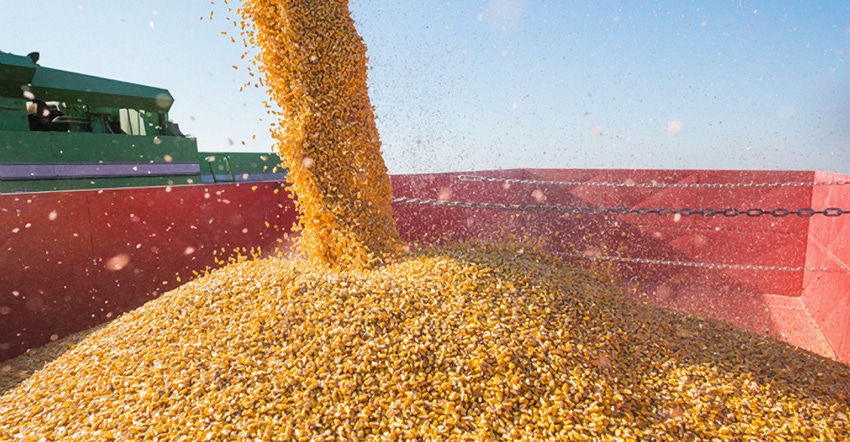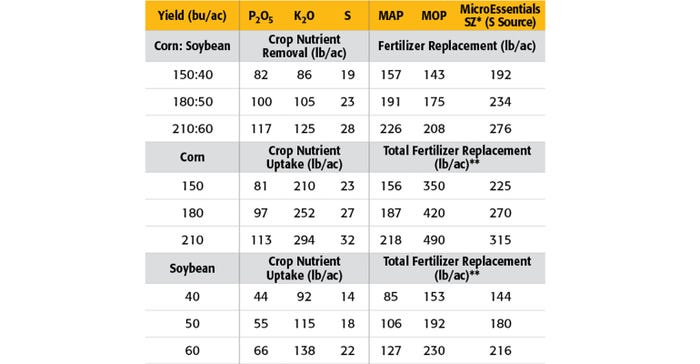January 1, 2017

Sponsored Content
Growers around the country should remember they’re removing more than just record yields from their fields after a record harvest. Since 1980, average corn yields have increased by more than 1.8 bu/ac per year, and soybean and wheat yields have increased by more than 0.45 and 0.3 bu/ac per year, respectively. Each year brings a new record yield, which creates greater nutrient removal; and, necessary measures need to be taken to replenish those nutrients.
Record crop yields often lead to lower crop prices, simply because supply outweighs demand. But is this the time to cut back on fertilizer? The answer is no. Higher yields may lead to lower prices, but total income may not be reduced dramatically. For example, corn yield of 200 bu/ac sold at $3 per bushel brings in the same income as 150 bu/ac at $4 or 120 bu/ac at $5. The real hurt in this scenario may be to those whose yields are below trend line. The question to ask is, Why? Is there a nutrient that is limiting crop yield that doesn’t necessarily show visual deficiency symptoms? There may be a “hidden hunger” in these fields. Proper soil and tissue testing may be the only way to determine deficiencies. Of course, genetics, rainfall, drainage or any number of a myriad of other factors may be the limiting factor, some of which may be out of your control. Soil and tissue testing over a period of several years, during which you can look for trends, is the best way to determine if you’re following proper nutrient management.
Grain prices have been relatively high over the past few years for a number of reasons. But did you become complacent in recent years because of higher crop prices? Are you still striving for the highest economic yields? Are you replenishing our soils to account for nutrient removal, even in the higher-yielding or record-yielding years?

Nutrient uptake and removal rates, with fertilizer replacement values for a corn-soybean rotation, based on trend-line yields.
It is important to keep in mind that crops require higher amounts of nutrients than those removed by the grain at harvest. Nutrients from the soil and added fertilizers supply these uptake needs. About 80 percent of the phosphorus (P) and 30 to 40 percent of the potassium (K) taken up by corn and soybeans are removed in the grain. The good news is that the additional 20 percent P and 60 to 70 percent K are retained in the stover and are recycled for future crops. The bad news is that failure to replenish nutrients removed by the harvested grain leaves fewer nutrients in the soil to support uptake requirements, especially in years when grain yields may be very high.
Through the Fusion® technology process of MicroEssentials,® nitrogen (N), P and sulfur (S) are fused into a nutritionally balanced granule, creating a single source for balanced crop nutrition. MicroEssentials provides the crop with season-long sulfur and is proven to increase nutrient uptake.
Whether you’re a grower or a consultant, you should invest the time to evaluate yield-limiting factors, and use soil and tissue testing to determine if you are providing season-long plant nutrition. Remember, record yields equal record removal — and should be followed by record replenishment. Talk to your local retailer to build a crop-nutrient management plan that will get the most out of your investment.
For more information about MicroEssentials,® talk to your local retailer or visit MicroEssentials.com.
About the Author(s)
You May Also Like




